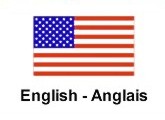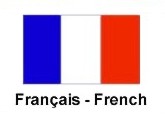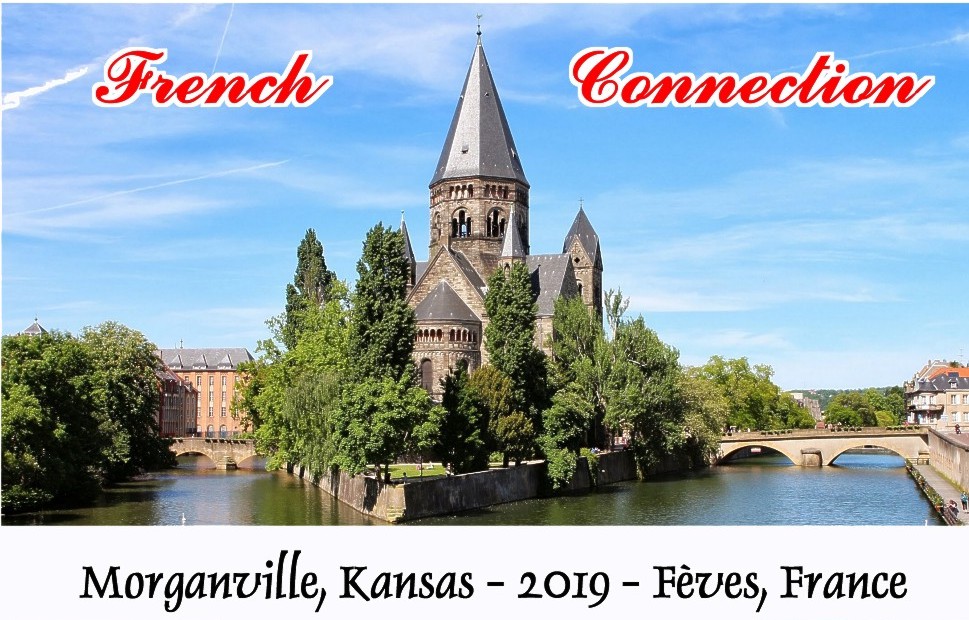
Trip Journal
Introduction
Trip overview - On June 12, 2019, nine people met in Metz, France for a two-week period during
which they would explore the city and the surrounding area. Three days later, two more people would join them for a bit more than
a week.
The sister-city relationship that developed in 1948 between Morganville, Kansas and Fèves, France, the latter being just six miles
northwest of Metz, was the event that brought them together so many years later.
This page and those linked to it serve to document the experience of these 11 visitors. It provides details related to
the background of the visit, who the visitors were, and where the longer-term visitors stayed. Separate pages accessed through the
buttons at the top of this page include materials about individual days as well as a listing of Gloria Freeland columns
about the sister-city relationship and related topics.
Oh, and that image above is Temple Neuf, a church on an island in the Moselle River. It was built near the start of the 20th
century and dedicated in the presence of the king of Germany as Metz was, at the time, part of the German empire.
The villages connect - On June 6, 1944, the Allies landed at Normandy, France. By
September of that year, the United States' Third Army was stalled at the western edge of Metz near the northeast border of the
country. The Germans had converted the city into a fortress, guarding entry into the Vaterland. The small village of Fèves,
population about 300, was located near several of the German forts. By mid-November, Metz had fallen to the Americans, but Fèves
was nearly destroyed during the battle.
In 1948, little Morganville, Kansas, also about 300, adopted Fèves. It did so, feeling it was appropriate as some of the
soldiers who had been part of the force that had unintentionally inflicted damage on the tiny French town were from the
Morganville area. The idea was for the Kansas village to help the people of the small battle-scarred farming community
survive until the United States' Marshall Plan could be implemented and aid with France’s recovery. To raise money to help,
Morganville resident Velma Carson wrote a play performed by locals and attended by much publicity and many spectators.
Trip origin - Gloria Freeland, professor in the Kansas State University journalism and mass
communications department in Manhattan, Kansas, and her husband Art Vaughan had been working on the story of the two villages
since 2013. A class assignment in Freeland's class had rediscovered the story. In 2015, Gérard Torlotting, Fèves citizen and
aid recipient, led a group of people from the Fèves area on a visit to Morganville. Thinking about what Gérard had done,
Freeland and Vaughan proposed a similar trip to Fèves and the area nearby.
But while the primary goal would be to make the experience interesting, they also wanted it to be relaxing. So while each day would have
an organized adventure or two, each person was encouraged to instead do something on his or her own if desired. This approach
provided time for adding unplanned experiences. Trips to a winery and a candy factory were two such experiences.
Metz! - Home Base
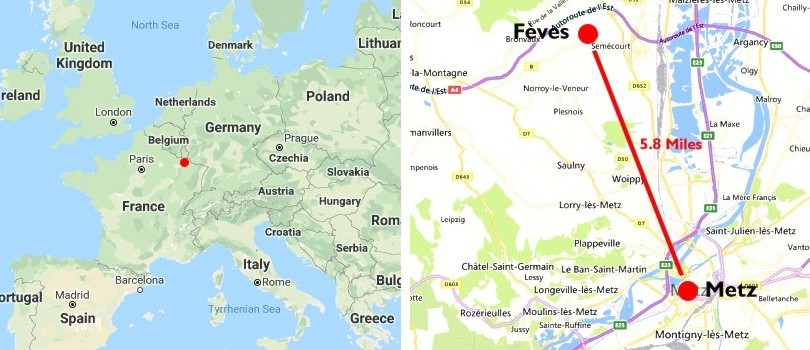
Location of Metz in Europe, left, and distance from Metz to Fèves
The city of Metz, population 120,000 and located near the junction of France, Germany, Luxembourg and Belgium, was the group's home base. It is six miles - 10 km - southeast of Fèves. Metz is the principal city of Lorraine, a region approximately 50 miles in radius containing more than two million people. Because Lorraine was part of Germany for long periods in the past, German influence is present in such things as architecture and personal names.
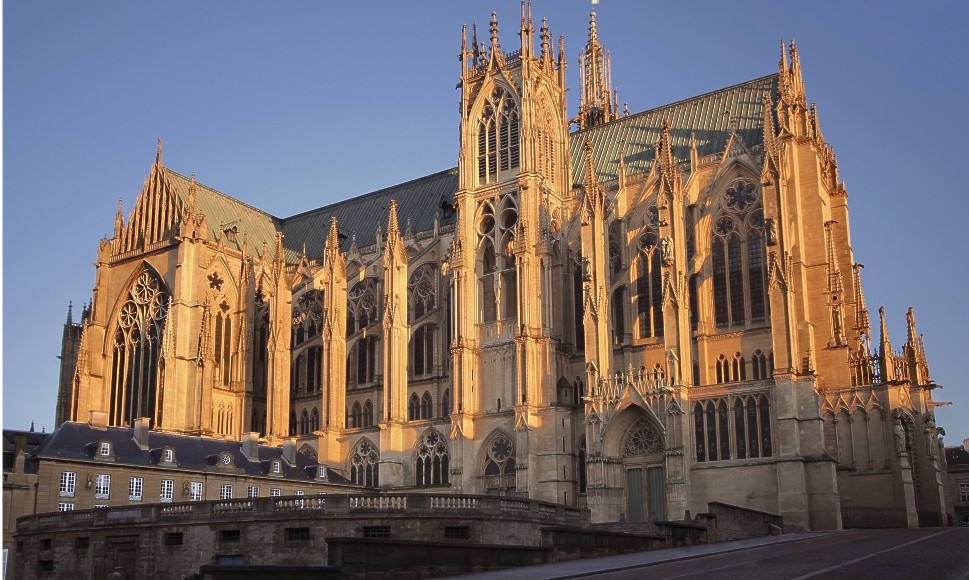
Metz' St. Etienne cathedral
The city is home to St. Etienne cathedral, a spectacular building that in most regards outshines Paris' better-known Notre Dame cathedral. The city has an almost uncountable number of sidewalk cafés, provides an extensive walking-only shopping area, includes many buildings dating to the Middle Ages and possesses a rich history dating from Roman times.
The Visitors

Art Vaughan & Sherri Bowlby
Gloria Freeland & Josh Ethridge
Lou Benjamin & Deb Skidmore

Margretta Fosse & Jay Mellies
Cody Church
Karen Ethridge
Ben Fosse
Gloria Freeland
Arthur "Art" Vaughan
Louise "Lou" Benjamin
Debra "Deb" Skidmore
Karen Ethridge
Joshua "Josh" Ethridge
Sherri Bowlby
Cody Church
Professor of journalism at KSU; 2013 class assignment rediscovered the story
Freeland's husband who, along with Freeland, has been researching the story
Assistant Dean of Arts and Sciences at KSU and Freeland colleague
Professor of journalism at KSU and Freeland colleague
A 2017 visitor to Metz from Kansas City and Vaughan's daughter
Emergency room mental health professional in Kansas City and Karen's son
Retired legal secretary from Wichita; Kansas and high school classmate of Freeland
Family business worker in Wichita and the nephew of Bowlby
Jay Mellies
Margretta Fosse
Ben Fosse
Retired from Hewlett Packard
Native of Morganville
Native American in play
Retired social worker
Velma Carson niece
Norwegian girl in play
Commercial airline pilot
Margretta's son
Mellies and Fosse on right in respective photos
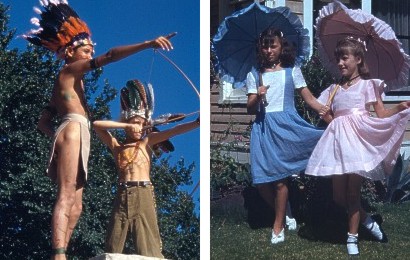
Home Away from Home
With the exception of the Fosses, the group stayed at the Residhome hotel at 10 Rue Lafayette in Metz, just 1,500 feet southwest of the city’s iconic train station. The hotel rooms had a small kitchen area, but did not have air conditioning. The Fosses stayed at several hotels in the central area.

Left: main entrance into the Residhome hotel on Lafayette street in Metz; right: Jay checks his phone while standing on his balcony. The entrance to the underground parking garage was to the left of the main building.
